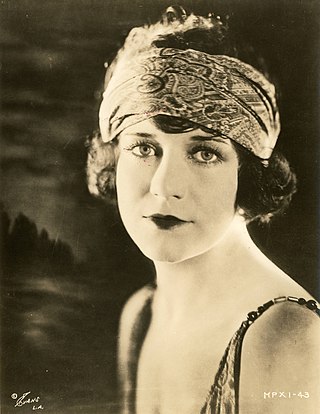
Viola Dana was an American film actress who was successful during the era of silent films. She appeared in over 100 films, but was unable to make the transition to sound films.

Sally Crute was an American actress of the silent film era.

Travers Vale, born Solomon Flohm, was an English-born silent film director, theatre impresario, playwright, and actor. Raised primarily in Victoria, Australia, he worked as a photographer, playwright and theatre manager in Victoria, Southern Australia, and New Zealand prior to his career in film. In his early career in theatre in Australia he was known by the name S. F. Travers Vale under which name he authored his first known play, The Mystery of a Hansom Cab (1888); an adaptation of the 1886 novel of the same name by Fergus Hume. He established his own theatre troupe, The Travers Vale Dramatic Company, which was in residence at the Theatre Royal, Adelaide in 1889 and the Auckland Opera House in New Zealand in 1890. In 1892 and 1893 he was the business manager of the American husband wife magician team of Charles N. Steen and Mrs. Steen.

Robert Donald Walker was an American film actor. He appeared in more than 200 films between 1913 and 1953. He was born in Bethlehem, Pennsylvania and died in Los Angeles.
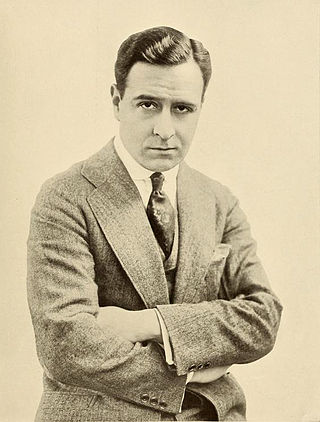
Conway Tearle was an American stage actor who went on to perform in silent and early sound films.

Hubert Willis was a British actor best known for his recurring role as Doctor Watson in a series of silent Sherlock Holmes films co-starring with Eille Norwood.

The Still Alarm is a melodramatic play by Joseph Arthur that debuted in New York in 1887 and enjoyed great success, and was adapted to silent films in 1911, 1918, and 1926. Though never a favorite of critics, it achieved widespread popularity. It is best known for its climactic scene where fire wagons are pulled by horses to a blazing fire.

Little Tuesday (1887–?), born as Charlotte Selina Wood, was an American child actress and niece of playwright Joseph Arthur who had a period of novelty popularity in the early 1890s.
The Garden Theatre was a major theatre on Madison Avenue and 27th Street in New York City, New York. The theatre opened on September 27, 1890, and closed in 1925. Part of the second Madison Square Garden complex, the theatre presented Broadway plays for two decades and then, as high-end theatres moved uptown to the Times Square area, became a facility for German and Yiddish theatre, motion pictures, lectures, and meetings of trade and political groups.

Blue Jeans is a 1917 American silent drama film, based on the 1890 play Blue Jeans by Joseph Arthur that opened in New York City to great popularity. The sensation of the play was a dramatic scene where the unconscious hero is placed on a board approaching a huge buzz saw in a sawmill, later imitated to the point of cliché.
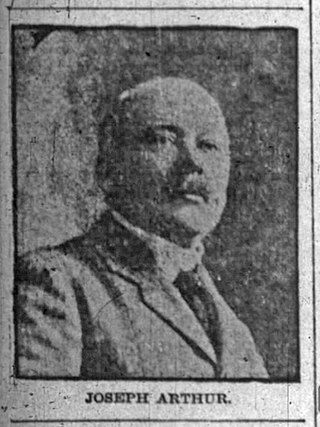
Joseph Arthur was an American playwright best known for his popular melodramatic plays of the 1880s and 1890s, including The Still Alarm (1887) and Blue Jeans (1890).
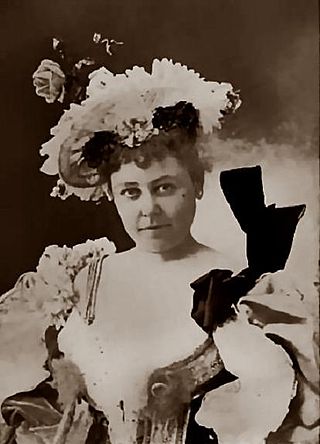
Jennie Yeamans was a child actress and singer popular in the 1870s and 1880s, and later a famous adult singer and actress. She was the younger sister of early silent film character actress Lydia Yeamans Titus and had another sister, Emily Yeamans, who died young.

Shelley Vaughan Hull was an American stage actor who also appeared in two silent motion pictures. His Broadway popularity as a suave handsome leading man was continually on the rise until his early death at age 34 in the Influenza pandemic of 1918.

Robert Cochran Hilliard was an American stage actor. A popular matinee idol of his day, he was nicknamed Handsome Bob.

Sydney Rosenfeld (1855–1931) was an American playwright who wrote numerous plays, and adapted many foreign plays. Close to fifty of his creations played on Broadway.

A Tailor-Made Man is a 1917 American play by Harry James Smith, which ran for 398 performances at the Cohan and Harris Theatre. It debuted on August 27, 1917, and played through August 1918.

Roi Cooper Megrue was an American playwright, producer, and director active on Broadway from 1914 to 1921.

Florence Rea Rockwell was an American actress.

Andrew Carpenter Wheeler, best known by the pen name Nym Crinkle, was a 19th-century American newspaper writer, author, and drama critic. He was one of the most prolific critics of his day, known for his pungent and fierce criticism.
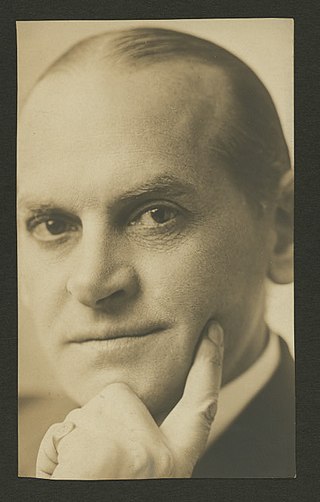
Francis Henry Westerton was a British stage and silent film actor of the 19th and early 20th centuries who carved a successful career on Broadway from 1905 to 1922.



















